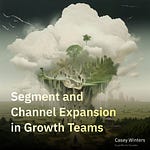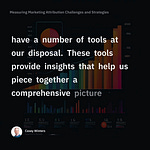A wave of AI manifestos from tech CEOs has triggered everything from backlash to confusion, but beneath the noise is a real strategic signal: most teams still aren’t thinking AI-natively.
Some of the response is reflexive AI backlash, which is, of course, the protesting of the future that happens with all new technologies. Some of it is a reaction to where AI is today, which is… inconsistent at best in its ability to do jobs better than humans. Some of it is seen as an excuse to layoff employees.
But setting aside the backlash, there’s something important in what these CEOs are saying. I think the spirit of these manifestos is correct. I’ve seen teams and early users of our product SuperMe unlock real productivity with these tools, while others misuse them and don’t get much material value. And I also see some entrepreneurs leveraging the tools to build real companies of the future. Some are building enduring companies. Others are just building pit stops on the road to the future. They’re useful now, but will quickly become forgotten like early mobile apps or search engines prior to Google.
One of the best video games of all time is the original Portal. It is essentially a puzzle game where you have a portal gun that allows you to create a portal between two places and walk through those portals to get to places that otherwise would be inaccessible. The game is narrated by an AI named GLaDOS. After solving some rudimentary puzzles, GLaDOS says the next task is impossible, and when you solve the puzzle, GLaDOS says, “now you’re thinking with portals.” I think what CEOs are struggling with is they see a lot of employees kind of working the same way as they were before ChatGPT and all of these other tools came out or using these in products in only slightly incremental ways. Thinking with portals means using AI not to slightly improve existing workflows, but to do things that were previously impossible. Why is this so important to CEOs? Well, one other thing GLaDOS famously says, “If at first you don't succeed, you fail.” This really does feel existential to CEOs. Succeed at becoming an AI company before other companies, or fail to be a company long term. And I can guarantee you Tobi at Shopify has played Portal.
One struggle in thinking with portals i.e. being AI-first is that many AI tools are not always “portal-worthy” themselves. That is, they cannot fulfill their promise yet without a lot of supporting work from the human. We call this work prompt engineering. There are some brilliant prompt engineers out there that get way more value than people who sort of give up when more complex prompt engineering is required.
What’s interesting about this AI revolution is that for certain tasks the AI revolution has progressed far enough to make convoluted prompt engineering irrelevant, whereas for most tasks it is still the norm to receive a good outcome from an AI tool. One example is image generation. Midjourney, while revolutionary when it launched in February 2022, required some complex prompt engineering to get great images that matched what was in people’s heads. Now, image generation in ChatGPT can reliably one shot many image requests from a normal sentence. It’s amazing. That sort of leap will happen for most other use cases over time. This creates three sort of tiers of work in an AI-native world:
The old way
The half measure
The one shot
Let’s look at another progression relevant for startups: data retrieval. There is:
The old way: write a SQL query to get data
The half measure: use ChatGPT to write SQL queries for you to get data
The one shot: have Cursor write Python scripts for you to get data
I actually kind of liked writing SQL, but I will most likely never do it again. Rip.
If it’s mission critical for your job, learning the half measure can still be very important to get some productivity improvement, but keep an eye out for when the one shot solution is possible, and don’t try to become a specialist in a half measure that will no longer be needed in 12-24 months. For non-mission critical elements, perhaps you can just wait for the one shot solution to emerge, because it might not be far off. Using half measures a lot of the time can make it more obvious what the eventual future will be. This is what CEOs are trying to get at with memos to their team. It’s not all about cost savings.
If an entrepreneur, you should as much as possible be building one shot product experiences. When the technology can’t quite get there, perhaps find product/market fit with a half measure product that allows you to sequence to the one shot easily. Do not build half measures that do not sequence to one shot solutions you can own. Those are escalators to nowhere. Your fast ARR growth eventually will neither be recurring nor revenue, and your half measure is just market research for the other startup or incumbent to build the one shot solution instead of you.
What are some examples of half measures vs. one shots in startup land right now? AI notetaking and AI prototyping are probably the most obvious examples of half measures. We certainly won’t be using tools like this standalone as models continue to advance. Customer support tools like Decagon, Sierra, and Fin and coding tools like Cursor and Windsurf feel more like potential one shots that are pushing toward an end state of how things will work, with rising success rates over time, and becoming even more agentic. This is how you want the products you work on to feel: occasionally magical, and on the verge of becoming reliably so.
I could be wrong, of course, about which tools ultimately become the one shot solutions. Predicting the trajectory of AI has proven humbling, and I’m still learning how to think with portals myself. But the shift is clear: the future belongs to products and teams that aim for step changes, not slight improvements.
To get there, we need to stop optimizing old workflows and start designing for what was previously impossible. That’s what CEOs are really asking when they talk about becoming AI-first. They don’t just want to save money; they’re asking their teams to get good at thinking with portals. And if GLaDOS is right, “If at first you don’t succeed, you fail.” So you better start thinking with portals.
Currently listening to my Electro playlist on Spotify.









